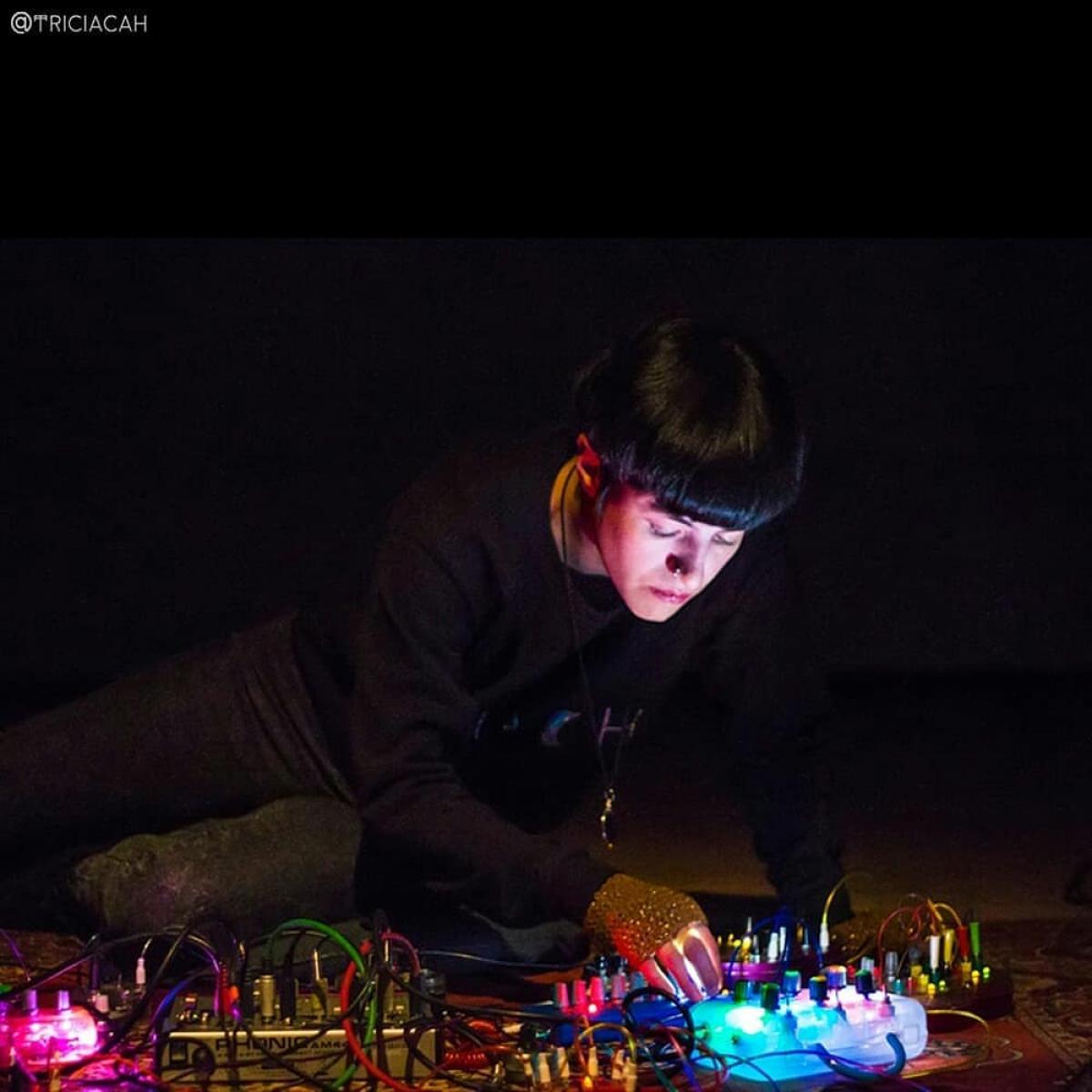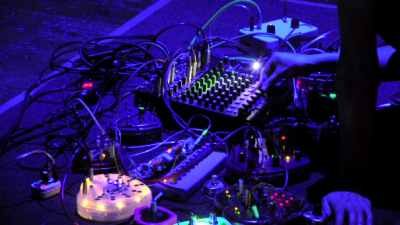
Against Techno Patriarchy
Constanza Piña is a chilean dancer and electronic musician. In her art, she questions the use of technology as a (male) ideology. Peter Gonda, aka gnd, met her at the Piksel Festival in Bergen, where she talks about emancipation through technology, technofeminism, and trash as a creative source.
Constanza Piña is a chilean dancer, performer and electronic musician currently residing in Mexico City. In Santiago de Chile, she co-founded Chimbalab - the first media lab in Chile dedicated to DIY electronics. Her sonic project Corazón de Robota uses synthesizers and sound gear completely built from DIY recycled electronic parts. Piña later joined Medialabmx in Mexico City, where she continues to develop her many projects in the domain of installations, wearable electronics and sound. The lab has become a focal point for a community of latin-american «Cyborgrrrls».
Working in a Hybrid Eco-System
I like to set up creation labs in which participants can give and receive back something, to socialize ideas and resolve through imagination. I work with technologies, therefore, I tend to re-think the insertion of technology in different social and physical realities. I connect with working groups in which each individual is autonomous and capable of problem-solving, communicating with others and vice-versa. My art is collective even though I make it individually. Today we live in a hybrid eco-system, where animal and vegetable kingdoms co-exist with human, technologic and cosmic systems in the same reality. We, as conscious human beings, can work with solidarity, love, and mutual support to make with care.
Technical Crossover
When my computer broke, I started to think about how to work with technology without a computer. In Chile there were some people working with this subject but without classes or teachers. That's when we decided to create an art and technology lab and to organize collaborative meetings where interested people could get together and learn from each other. All my knowledge is empirical, by experimenting, making mistakes, having fun. Whether something is easy or difficult that's a mental issue; if you like what you do, it shouldn't be hard, laborious, or complex. You have to dedicate a lot of time to projects, study a lot (online), and work with passion.
A Feminist Robot in Latin America
Latin America, as the rest of the world, is quite machista. With my work I develop another idea of technology. Technology can be knitting, sewing, programming, cooking; the first manifestation of technology is fire, therefore, I avoid establishing hierarchies between technologies or diminishing people who work in technical labour. It is true. Most of the time I arrive to places where only men work. But my work is my activism, I am a woman working with technologies, teaching other women to work with electronics, to revalorize techniques, manual and craft practices, traditionally made by women. To me, there is no such thing as gender anymore. The word «Robot» comes from the Czech word «Robot», which means «forced labour» or the tedious work that the «man» doesn't want to do. For me, Corazón de Robota means tedious work made with love.
What Is Techno-feminism?
I organize an event called «circuit riot», a woman’s noisen circle in Argentina, Peru, and Colombia. In Guatemala I worked with queer groups about technology and gender and right now here in Mexico we are organizing a techno-feminist encounter. When I went to school, in the technology class, they separated girls from boys; boys were taught in woodwork and electronics and girls to embroider and knit baby clothes. All the technologic tools we use have a gender idea attached. Technology has been thought and designed mainly by white heterosexual men. This technology that surrounds us holds an ideology, it talks about traditions and a dominant cultural-social system of power, reflecting the human reality of its mentors. If women can design technologies, this means we can re-think it and generate a new technical reality. There is a techno-centrist patriarchy that has to be destroyed, so that we can be free in the execution of our technological practice.
Sound as Matter
More than music, I tend to think about sound in general and electricity as an element of matter that can be modeled to generate sound frequencies both audible and inaudible. I didn’t study music and that allowed me to freely experiment with noise, the arrhythmic and atonal. I see my body as an antenna. When I play, I imagine that I install a signal recepting central. I send and receive frequencies. In concert spaces, there are acoustic modulations that generate unexpected environments; it is like making ghosts speak, making hearable the unhearable. I think about electromagnetism as one of the forces of the universe and its effects over our body as solid and liquid matter. In this way, I achieve a vibrational catharsis where the body is submerged in a sea of frequencies and atomic-level vibrations. I am mad for things like microwaves, star frequencies, pulsars, supernovas and gravitational waves.

Open Source
When I started I worked with the resources that were at hand, like the second hand markets and the internet. I looked for schematics in blogs to learn. Later I felt responsible to give back to the open source movement what I have learned, so I started to publish all my experiments in a blog with an open forum so that people could ask me questions. A great part of my work is about sharing knowledge. For me, this is a political gesture. I dedicate myself to teaching, not only doing, but also to the philosophy behind doing.
I have been recycling since I started. There wasn't much money to buy materials and in the things from the trash there were many components that were much more expensive to buy separately. I saw something special in the trash. It is a capitalist invention. Society teaches us to use and throw away, and buy again; I prefer to not buy and manage with whatever I find lying around. This made me much more creative. Found or recycled objects have more value to me than new ones: they hold memories from the past and propose new uses and meanings. I like to make future electronic artifacts by using technology from the past.
Working with DIY means not only that you are good at doing something, like taking a photo and showing it to everybody, but rather, it has the potential of doing your own stuff and going a little against the system of buying and selling. And of course it allows you to learn from what you do and to think consciously about technology and its use in our society.
Current Projects
Currently I'm researching Inca textiles as a mathematical system to build a textile computer. I'm organizing an open lab to think and build it. Also I’m developing prototypes of textile antennas. I’m very interested in electromagnetism. On the other hand, I’m working on the idea of «technologies of arousal»: electronic prototypes based on recycling and low tech to build low cost DIY vibrators, our own DIY pleasure machines.
Biography
Published on December 17, 2017
Last updated on April 29, 2024
Topics
Can a bedroom producer change the world? How do artists operate in undersupplied conditions?
Why is a female Black Brazilian MC from a favela frightening the middle class? Is the reggaeton dance «perreo» misogynist or a symbol of female empowerment?
How does the artits’ relationship to the gear affect music? How to make the climate change audible?
Snap
